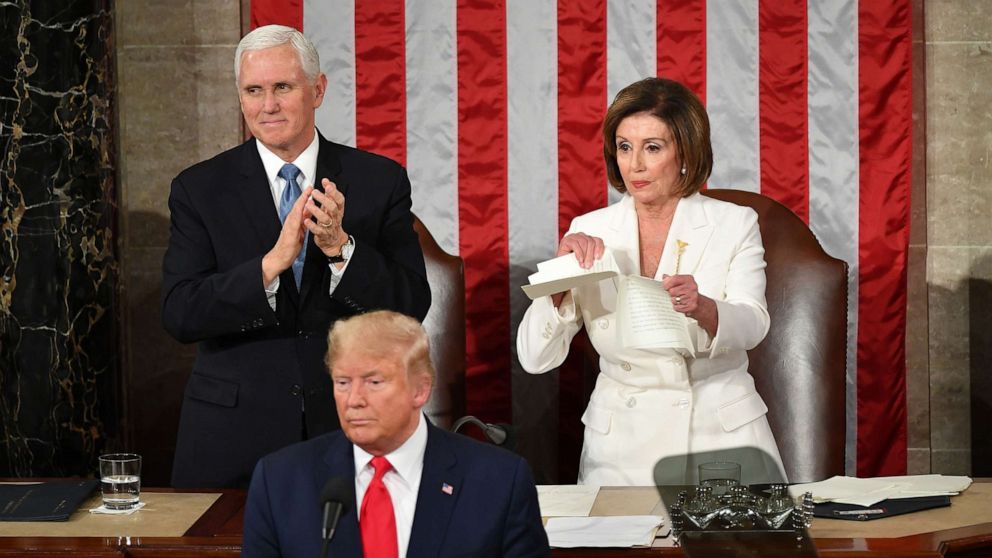Facebook and Twitter have rejected a request by US Speaker, Nancy Pelosi to remove a video posted by President Trump that was edited to make it appear
Facebook and Twitter have rejected a request by US Speaker, Nancy Pelosi to remove a video posted by President Trump that was edited to make it appear as though she were ripping a copy of his State of the Union address as he honored a Tuskegee airman and other guests.
The decision highlighted the tension between critics who want social media platforms to crack down on the spread of misinformation and others who argue that political speech should be given wide latitude, even if it’s deceptive or false.
The roughly 5-minute clip shows Ms. Pelosi repeatedly ripping his speech in between snippets of him paying tribute to the airman, Charles McGee as well as other guests he had invited to the State of the Union, including military families. In fact, Ms. Pelosi did rip a copy of Trumps/ speech immediately after his address to Congress on Tuesday.
Drew Hammill, Ms. Pelosi’s deputy chief of staff, on Friday demanded that the video be removed.
“The American people know that the President has no qualms about lying to them — but it is a shame to see Twitter and Facebook, sources of news for millions, do the same,” Mr. Hammill said.
“The latest fake video of Speaker Pelosi is deliberately designed to mislead and lie to the American people, and every day that these platforms refuse to take it down is another reminder that they care more about their shareholders’ interests than the public’s interests,” he wrote.
But both companies rejected the request.
Andy Stone, a Facebook spokesman, responded to Mr. Hammill on Twitter, saying, “Sorry, are you suggesting the President didn’t make those remarks and the Speaker didn’t rip the speech?”
Hammill shot back at Stone, saying: “What planet are you living on? this is deceptively altered. take it down.”
Mr. Stone said that the video did not violate Facebook’s policy on manipulated media. The policy states, in part, that Facebook will remove videos that have been edited or synthesized “in ways that aren’t apparent to an average person and would likely mislead someone into thinking that a subject of the video said words that they did not actually say.”
In the case of the video posted by Mr. Trump, “the reason I was making the point about the fact that the things featured in this video actually happened is because that’s a key element of our policy on content like this,” Stone said.
A Twitter spokeswoman, Lindsay McCallum, wrote on Saturday that, beginning on March 5, the company would start applying labels that read “manipulated media” on heavily edited videos like Trump’s. Twitter said it may also show a warning to users before they retweet or like a tweet with a manipulated video and may reduce the visibility of such tweets.
Trump’s campaign said that the video, titled “Powerful American Stories Ripped to Shreds by Nancy Pelosi,” was clearly a parody.
“If Nancy Pelosi fears images of her ripping up the speech, perhaps she shouldn’t have ripped up the speech,” Tim Murtaugh, a Trump campaign spokesman, said.
The campaign referred questions about the origin of the video to the White House, which did not respond to a request for comment.
See the video below
This video @realDonaldTrump posted is triggering Pelosi and so many Democrats, it’s definitely worth sharing! https://t.co/BTYBC1YtP1
— Ronna McDaniel (@GOPChairwoman) February 9, 2020
